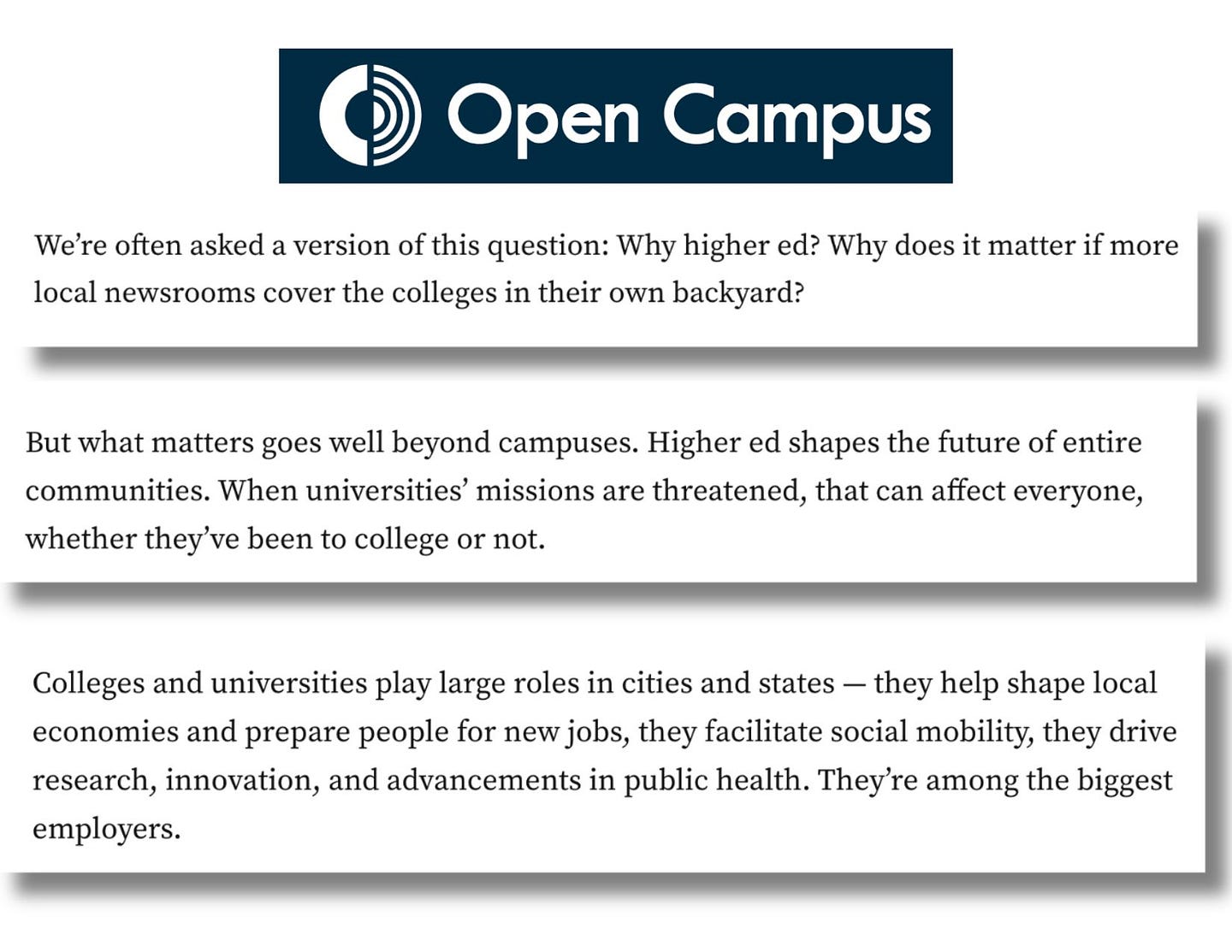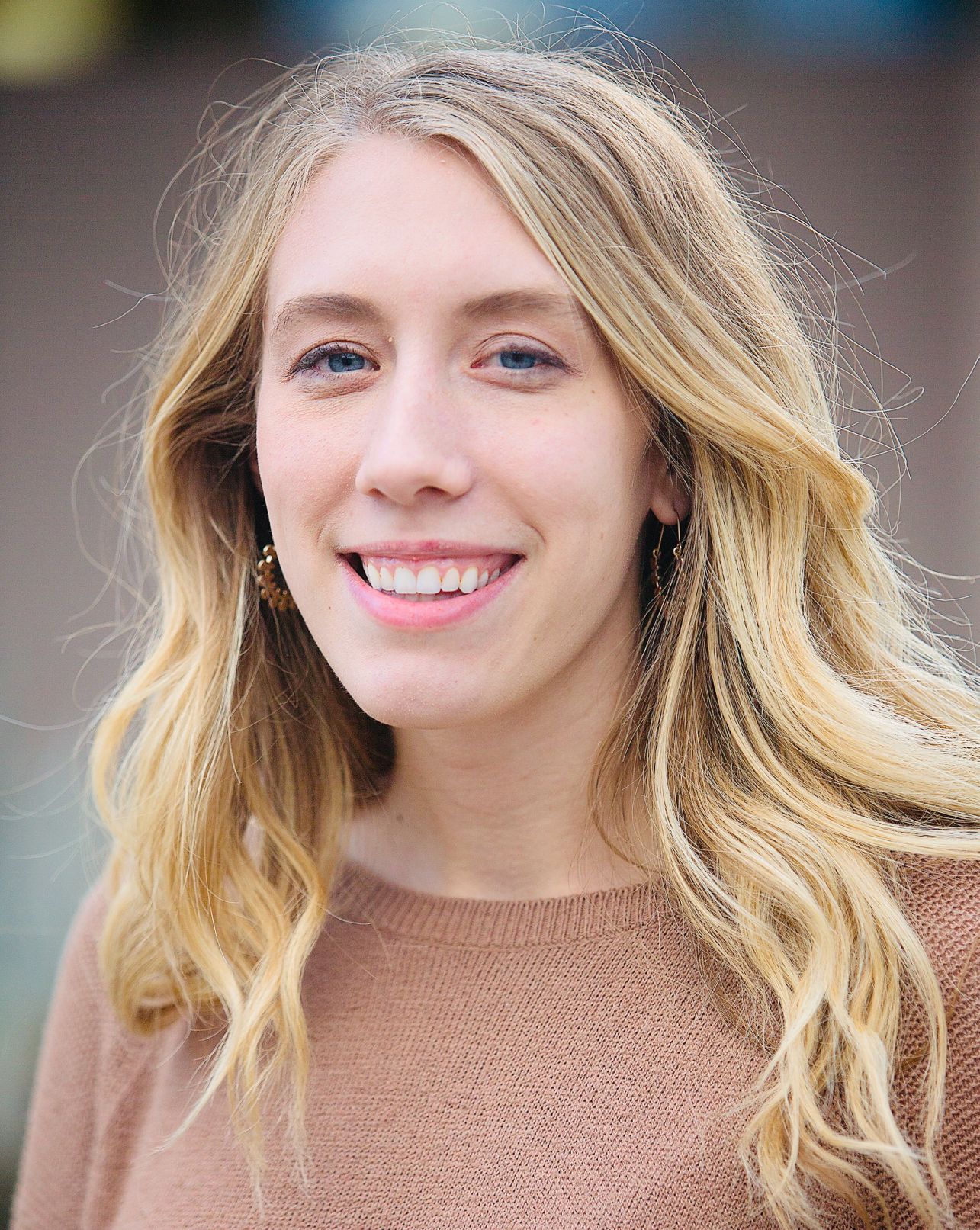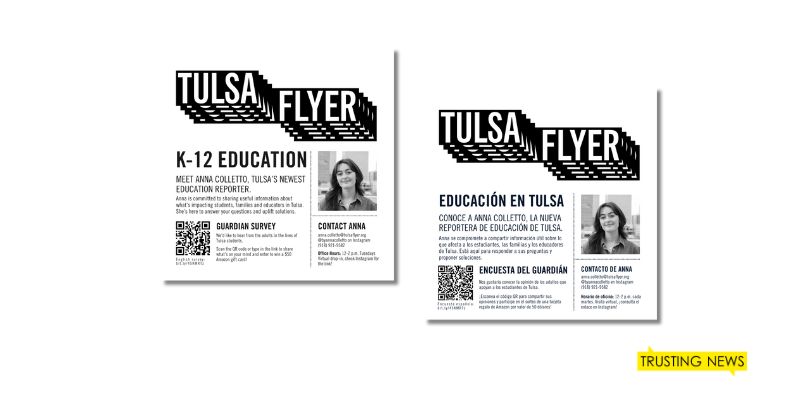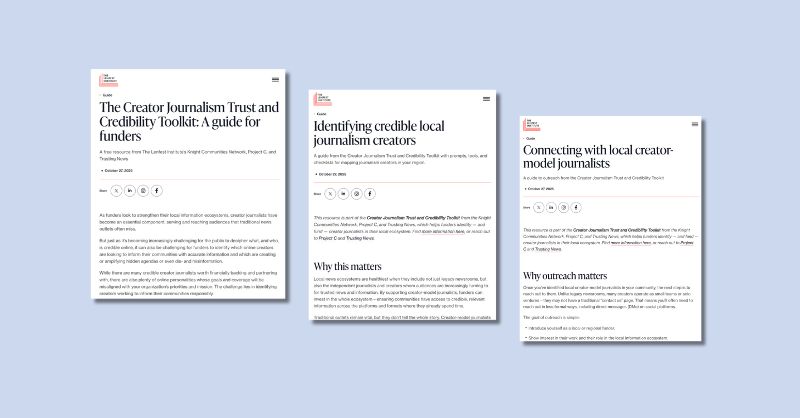
This weekly Trust Tips newsletter shares quick, actionable tips for how journalists can earn and sustain trust. Subscribe to get it in your inbox at trustingnews.org/newsletter.
Say clearly why specific coverage is relevant
Want to get this Trust Tips newsletter in your inbox each Tuesday? Subscribe here.
Between new executive orders and concerns of funding cuts, higher education has been in the news cycle a lot lately.
Often, the public perception of higher ed is that it’s only relevant to an elite and educated class. For people in social circles where higher education experience isn’t necessarily common or valued, it makes sense that they might tune out news about the topic or feel like changes to higher ed institutions are irrelevant to their lives.
But in reality, decisions made on and about campuses affect the local communities in lots of ways people may not fully understand. So, how can journalists do a better job of connecting those dots for people?
Here’s a great example of how the staff at Open Campus, which partners with local newsrooms to put reporters on the higher-ed beat, recently explained this.
‘Why entire communities deserve to know about higher ed’
Instead of assuming people will know why they should care about higher education coverage or how it affects the community as a whole, the staff wrote a column clearly articulating how higher ed and its institutions impact people in local communities.
Here are a few excerpts from the column:

The staff goes on to get really specific about what those potential changes in higher ed might mean for communities, like impacting the economy, public health services and job opportunities.

Colleen Murphy, a managing editor at Open Campus, said the explainer helps serve two purposes for the team.
From a practical sense, Open Campus and its network of journalists found themselves referring to these same talking points often, so it’s helpful to have this mission explained in a public-facing column they can easily link to and share.
On a bigger-picture level, it helps them explain the why behind their reporting.
“As we report on new federal policy that takes aim at colleges and universities, it’s important that we also articulate why they matter. Cuts to federal research funding aren’t theoretical; they have lasting effects on communities and people beyond the walls of an institution,” Murphy wrote in an email last week.
“It’s useful to just directly state why we believe communities deserve to know more about higher ed. I don’t think we can repeat it enough!”
Your turn: Help people connect the dots
This idea of explaining the relevance behind your coverage of course goes beyond just higher education. Whether you’re covering the economy, local politics or healthcare, we encourage you to continually be asking:
- How is this relevant to the people you aim to serve?
- Will the connections be obvious to your entire audience?
- How can you make the relevance more explicitly clear?
Can you get specific in painting a picture of how different policy changes could impact people’s lives? Can the focus of coverage be more on the overall impact, versus just the latest update?
And of course, if you’re working to provide high-value and high-utility content for your audience, we encourage you to share that mission and goal with your audience. Get clear that your goal is to help people make informed decisions about their lives, and part of the way you do that is by helping people understand local impact.
Resources:
- Creating an FAQ about a specific beat of coverage topic can be a great way to get on the record with the why and how of your work.
- Working transparency into your coverage can look a lot of different ways. Find one that works for you with our Transparency Trust Kit.
Reporting support from Open Campus
Many people feel overwhelmed and are trying to make sense of what’s going on. A great way local journalists can step in to help their communities is by continuing to localize national issues. Open Campus is helping doing this with their Higher Ed Under Pressure project.
Through the project, their team offers support to any newsroom looking to help localize the effects of national policy changes on higher education in their area. Specifically, participants in the project receive beat coaching, story ideas and policy analysis, all free of charge. Since launching the project in March, reporters and editors at nearly four dozen local newsrooms have signed up for coaching and support. Learn more here.Despite this, it often falls low on newsrooms’ priorities lists, with journalists I’ve worked with citing a lack of time or buy-in as reasons why they don’t invest in the work. Yet research shows that when journalists really commit to hearing from people who don’t feel served by the news, it can greatly boost people’s trust in news while also helping journalists better understand how to reach and serve those people.
We’ve been exploring what it could look like if an entire ecosystem of newsrooms committed to better understanding their larger communities. We’ve already seen in places like Oklahoma and Pittsburgh how ecosystem-level engagement can deepen journalists’ understanding of the public’s needs.
Imagine the exponential impact if multiple newsrooms in your area invested in regularly hearing from your larger community — and then committed to sharing those insights with each other.
In today’s Trust Tip, we’re sharing some steps and resources for how you could kick off this type of collaborative listening. (This builds on my recent presentation at the Collaborative Journalism Summit in Denver.)
5 steps for collaborative listening
- Picture who is missing? When you look at your audience, who in your community is not represented there? Who would you like to be reaching more? Get specific when thinking about how these groups are or aren’t reflected in: your coverage, your sourcing and your audience.
- Identify your collaborators. Who in your area shares similar goals? Your collaboration might end with others in your newsroom, and that’s still valuable. But think about how you could expand beyond your own news organization. This could include other news outlets, and you might also consider collaborating with other trusted messengers or institutions in your area. That could look like partnering with a local organization, a community leader or even a content creator.
- Ask questions focused on people’s needs. Instead of focusing on gathering feedback specific to your coverage, focus your listening on getting curious about the news consumer. Use the questions in our Community Interview Guide to ensure you’re centering your listening on understanding people’s news needs. Use the time to really hear their concerns, not necessarily defend your work.
- Collect what you hear. As you collect insights, share them back with everyone involved. The goal is for coverage to change based on what is learned. Find the best way to both share highlights with your colleagues AND to surface relevant insights when specific topics are raised. To help, we created a Google Form you can copy and use to help gather insights after one of these conversations. But think about what format (a google doc summary? a Slack channel?) would help make the insights accessible to your collaborators.
- Let what you hear spur change. The information you learn is only helpful if it leads to change, whether that be changes in your mindset or changes in your coverage. And if you make changes based on what you hear from the audience, be sure to reach back out and let them know. If people invest in having a conversation with you, they’ll likely be curious about what comes of it.
We have more detailed help in this Collaborative Listening Guide, including a checklist for collaboration as well as a worksheet to get you started. You’ll find this guide is simple on purpose! Our goal isn’t to overcomplicate this. Unlike other collaborations, gathering insights doesn’t necessarily need to involve sharing content or any exchange of money. The only necessary components are a desire to better serve and understand your community and a willingness to prioritize scaling your listening efforts over any sense of competition.
Resources to help
Below, we’re sharing a few resources from Trusting News and beyond to help you start collaboratively listening in your community. For even more resources and specific newsroom examples, check out our Listening Trust Kit.
- Trusting News’ Community Interview Guide will lead you through how to have one-on-one conversations with community members. It also includes guidance on how to find people to talk to.
- We created a Google Form template you can copy to help you collect data and standardize your community listening across a newsroom or entire ecosystem.
- The Reynolds Journalism Institute’s Collaboration ToolKit is a detailed guide on how journalists can collaborate, and the Listening Post Collective also has a great guide for how to listen to specific communities.
- If you want to collaborate beyond other news outlets, API has a guide for partnering with community influencers and trusted messengers.
We’re here to help!
We’re always excited when journalists reach out for help on how to listen to their community. If you have questions, concerns or could use some brainstorming help on how to kick this off in your community, respond to this email! We’d love to support you in this work.
At Trusting News, we learn how people decide what news to trust and turn that knowledge into actionable strategies for journalists. We train and empower journalists to take responsibility for demonstrating credibility and actively earning trust through transparency and engagement. Learn more about our work, vision and team. Subscribe to our Trust Tips newsletter. Follow us on Twitter, BlueSky and LinkedIn.

Project manager Mollie Muchna (she/her) has spent the last 10 years working in audience and engagement journalism in local newsrooms across the Southwest. She lives in Tucson, Arizona, where she is also an adjunct professor at the University of Arizona’s School of Journalism. She can be reached at mollie@trustingnews.org and on Twitter @molliemuchna.



